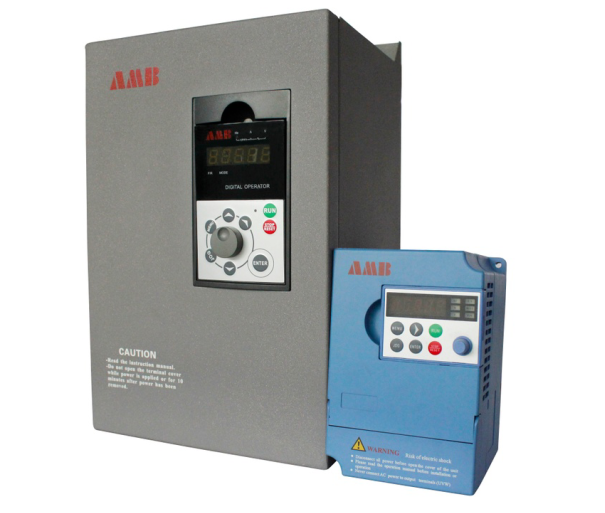
There are many function parameters of the inverter. Generally, there are dozens or even hundreds of parameters for users to choose. In practical applications, it is not necessary to set and debug each parameter, and most of them only need to use the factory set values. However, some parameters have a lot to do with actual use, and some are related to each other, so they need to be set and debugged according to the actual situation.
The functions of different types of inverters are different, and the names of the same function parameters are also inconsistent. Therefore, this article uses the basic name of Fuji inverters as an example. Since the basic parameters are almost common to all types of inverters, it is completely possible to achieve a touch-type bypass.
First, acceleration and deceleration time
The acceleration time is the time required for the output frequency to rise from 0 to the maximum frequency, and the deceleration time is the time required to decrease from the maximum frequency to 0. Usually the frequency setting signal rises and falls to determine the acceleration and deceleration time. When the motor is accelerating, it is necessary to limit the rising rate of the frequency setting to prevent overcurrent, and to decelerate the limiting rate to prevent overvoltage.
Acceleration time setting requirements: Limit the acceleration current to below the inverter's overcurrent capacity, so that the inverter will not trip due to overcurrent stall; the main points for setting the deceleration time are: to prevent the smoothing circuit voltage from being too large, and not to cause the regeneration overvoltage stall. Trip the frequency converter. Acceleration and deceleration time can be calculated according to the load, but in debugging, it is often taken to set a longer acceleration and deceleration time according to the load and experience, and observe whether there is overcurrent or overvoltage alarm by starting and stopping the motor; then gradually set the acceleration and deceleration setting time It is shortened, and the principle of no alarm occurs during operation. Repeat the operation several times to determine the optimal acceleration and deceleration time.
Second, torque boost
It is also called torque compensation. It is a method to increase the low frequency range f / V in order to compensate the torque reduction at low speed caused by the resistance of the motor stator winding. When set to automatic, the voltage during acceleration can be automatically increased to compensate the starting torque and make the motor accelerate smoothly. If manual compensation is used, a better curve can be selected through experiments based on the load characteristics, especially the load starting characteristics. For variable torque loads, if the output voltage is too low at low speeds and the electric energy is wasted if it is not selected properly, the phenomenon that even when the motor starts with a load and the current is large, the speed does not go up.
Third, electronic thermal overload protection
This function is set to protect the motor from overheating. It is based on the CPU in the inverter to calculate the temperature rise of the motor according to the running current value and frequency, so as to perform overheat protection. This function is only applicable to the situation of "one drag one", and in the case of "one drag one", a thermal relay should be installed on each motor.
Electronic thermal protection set value (%) = [rated motor current (A) / inverter rated output current (A)] × 100%.
Fourth, the frequency limit
That is, the upper and lower limit amplitude values of the inverter output frequency. Frequency limitation is a protection function to prevent misoperation or failure of the external frequency setting signal source, causing the output frequency to be too high or too low to prevent damage to the equipment. It can be set according to the actual situation in the application. This function can also be used for speed limit. If there is not much material in the belt conveyor, in order to reduce the wear of the machine and the belt, it can be driven by an inverter and set the upper limit frequency of the inverter to a certain frequency value. In this way, the belt conveyor can be operated at a fixed, low working speed.
V. Bias Frequency
Some are also called deviation frequency or frequency deviation setting. Its purpose is when the frequency is set by an external analog signal (voltage or current). This function can be used to adjust the output frequency when the frequency setting signal is the lowest, as shown in Figure 1. When the frequency setting signal is 0% in some inverters, the deviation value can be in the range of 0 ~ fmax, and some inverters (such as Mingdianshe and Sanken) can also set the bias polarity. For example, when the frequency setting signal is 0% during debugging, the output frequency of the inverter is not 0Hz, but xHz. At this time, setting the offset frequency to negative xHz can make the inverter output frequency 0Hz.
Six, the frequency setting signal gain
This function is only effective when the frequency is set by an external analog signal. It is used to make up for the inconsistency between the external set signal voltage and the internal voltage (+ 10v) of the inverter; at the same time, it is convenient to select the analog set signal voltage. When setting, when the analog input signal is the largest (such as 10v, 5v or 20mA), find the frequency percentage that can output f / V graph and set it as a parameter; if the external setting signal is 0 ~ 5v, if the inverter output frequency is 0 ~ 50Hz, the gain signal will be Just set it to 200%.
Seven, torque limit
It can be divided into driving torque limitation and braking torque limitation. It is based on the output voltage and current value of the inverter, and the torque is calculated by the CPU. It can significantly improve the shock load recovery characteristics during acceleration and deceleration and constant speed operation. The torque limit function enables automatic acceleration and deceleration control. Assuming the acceleration / deceleration time is less than the load inertia time, the motor can also be automatically accelerated and decelerated according to the torque set value.
The driving torque function provides a powerful starting torque. During steady-state operation, the torque function will control the motor slip and limit the motor torque to the maximum set value. When the load torque suddenly increases, even When the acceleration time is set too short, it will not cause the inverter to trip. When the acceleration time is set too short, the motor torque will not exceed the maximum set value. Large driving torque is good for starting. It is better to set it to 80 ~ 100%.
The smaller the setting value of the braking torque is, the larger the braking force is, which is suitable for the occasion of rapid acceleration and deceleration. For example, if the setting value of the braking torque is too large, an over-voltage alarm occurs. If the braking torque is set to 0%, the total regeneration amount added to the main capacitor can be close to 0, so that when the motor is decelerated, it can be decelerated to a standstill without tripping without using a braking resistor. However, on some loads, such as when the braking torque is set to 0%, a brief idling phenomenon will occur during deceleration, which will cause the inverter to start repeatedly, the current will fluctuate greatly, and the inverter will trip in severe cases. Attention should be paid to it.
Eight, acceleration and deceleration mode selection
Also called acceleration / deceleration curve selection. Generally, the inverter has three types of curves: linear, non-linear, and S. Generally, linear curves are usually selected. Non-linear curves are suitable for variable torque loads, such as fans. S curve is suitable for constant torque loads, and its acceleration and deceleration change slowly. When setting, you can select the corresponding curve according to the load torque characteristics, but there are exceptions. When debugging the inverter of a boiler induced draft fan, I first select the non-linear curve of the acceleration and deceleration curve, and the inverter will trip and adjust when running together. Changing many parameters has no effect, and it is normal after changing to S curve. The reason is that before the start, the induced draft fan rotates by itself due to the flue gas flow, and it becomes a negative load in the reverse direction. In this way, the S curve is selected to make the frequency increase rate at the start just slower, thereby avoiding the inverter The occurrence of a trip, of course, is the method adopted for the inverter without the DC braking function.
Nine, torque vector control
Vector control is based on the theory that asynchronous motors and DC motors have the same torque-generating mechanism. The vector control method is to decompose the stator current into a predetermined magnetic field current and torque current, and control them separately, and output the combined stator current to the motor at the same time. Therefore, the same control performance as a DC motor can be obtained in principle. With the torque vector control function, the motor can output the maximum torque under various operating conditions, especially when the motor is in a low-speed operating region.
Almost all current frequency converters use vectorless feedback control. Because the frequency converter can perform slip compensation according to the load current and phase, the motor has very hard mechanical characteristics, which can meet the requirements for most occasions. Externally set speed feedback circuit. This function can be set according to the actual situation.
The related function is slip compensation control, whose function is to compensate the speed deviation caused by the load fluctuation, and the slip frequency corresponding to the load current can be added. This function is mainly used for positioning control.
Ten, energy-saving control
Fans and water pumps are torque reducing loads, that is, as the speed decreases, the load torque decreases proportionally to the square of the speed. The inverter with energy-saving control function is designed with a dedicated V / f mode, which can improve The efficiency of the motor and the inverter can automatically reduce the output voltage of the inverter according to the load current, thereby achieving the purpose of energy saving, and can be set to be effective or ineffective according to the specific situation.
It should be noted that the nine and ten parameters are very advanced, but some users are unable to enable these two parameters during the equipment modification, that is, the inverter trips frequently after being enabled, and everything is normal after being disabled. The reasons are as follows: (1) The parameters of the original motor are too different from those of the inverter. (2) Insufficient understanding of the parameter setting function. For example, the energy-saving control function can only be used in the V / f control mode and cannot be used in the vector control mode. (3) The vector control mode is enabled, but the manual setting and automatic reading of the motor parameters are not performed, or the reading method is improper.

|
|

|
| The public, | Mobile station |
 0755-81719517
0755-81719517
|
|
 0755-81719530 0755-81719530 |
 [email protected] [email protected] |
 Floor 1, 5 and 6, building 7, lijincheng science and technology industrial park, gongye dong road, longhua new district, shenzhen Floor 1, 5 and 6, building 7, lijincheng science and technology industrial park, gongye dong road, longhua new district, shenzhen |
|